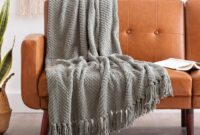Industrial design for urban apartments sets the stage for this enthralling narrative, offering readers a glimpse into a story that is rich in detail with semrush author style and brimming with originality from the outset.
Industrial design in urban apartments brings a unique blend of style and practicality, transforming living spaces into modern havens of creativity and functionality.
Overview of Industrial Design for Urban Apartments

Industrial design in the context of urban apartments involves incorporating elements inspired by factories, warehouses, and other industrial spaces into residential interiors. This style focuses on showcasing raw materials, exposed structures, and utilitarian objects to create a unique aesthetic.
Industrial design elements can enhance the aesthetics and functionality of urban living spaces by adding character, texture, and visual interest. The use of materials such as metal, concrete, and reclaimed wood can create a sense of authenticity and warmth in modern apartment settings. Additionally, industrial design often emphasizes open floor plans, high ceilings, and large windows to maximize natural light and space.
Common industrial design features found in urban apartment interiors include:
– Exposed brick walls
– Metal piping and ductwork
– Concrete floors or countertops
– Edison light bulbs and exposed light fixtures
– Salvaged or repurposed furniture
– Industrial-style shelving and storage units
These elements come together to create a contemporary yet rugged look that pays homage to the industrial roots of urban areas while providing a practical and versatile design solution for modern living spaces.
Incorporating Industrial Materials
Industrial design for urban apartments often includes the use of materials such as exposed brick, concrete, steel, and reclaimed wood. These materials are key elements that contribute to the overall industrial look and feel, creating a modern and edgy aesthetic within the living space.
Exposed Brick
Exposed brick walls are a hallmark of industrial design, adding texture and a sense of history to urban apartments. To incorporate exposed brick harmoniously, consider leaving one wall exposed while painting the others in a neutral color to balance the look.
Concrete
Concrete floors or countertops can enhance the industrial vibe in urban apartments. To soften the harshness of concrete, consider adding rugs, throw pillows, or upholstered furniture to create a more inviting atmosphere.
Steel
Steel accents, such as light fixtures, furniture legs, or shelving, can add a sleek and modern touch to industrial design. Mixing steel elements with softer textures like leather or velvet can create a balanced and visually appealing space.
Reclaimed Wood
Reclaimed wood furniture or accent pieces bring warmth and character to industrial apartments. Incorporate reclaimed wood through dining tables, shelving units, or even as decorative wall panels to add a touch of nature to the urban setting.
Furniture and Layout

When it comes to industrial design in urban apartments, furniture plays a crucial role in setting the tone and enhancing the overall aesthetic. Selecting the right furniture pieces and optimizing layout are essential for creating a cohesive industrial-themed living space.
Furniture Styles for Industrial Design
- Industrial furniture pieces such as metal chairs, reclaimed wood tables, and leather sofas can complement the industrial aesthetic in urban apartments.
- Minimalist designs with clean lines and a focus on functionality are typically favored in industrial-inspired spaces.
- Mixing materials like metal, wood, and leather can add depth and visual interest to the interior design.
Optimizing Layout and Space Planning
- Consider the flow of the space and how furniture placement can maximize both functionality and visual appeal.
- Utilize multi-functional furniture pieces such as storage ottomans or convertible sofas to make the most of limited space.
- Create designated areas for different activities like lounging, dining, and working to ensure a well-balanced layout.
Balancing Functionality and Aesthetics
- While aesthetics are important in industrial design, functionality should not be compromised. Choose furniture pieces that not only look good but also serve a practical purpose.
- Opt for furniture with built-in storage solutions to keep clutter at bay and maintain a clean, organized living space.
- Mix and match different furniture styles to create a dynamic and visually appealing environment while ensuring that each piece contributes to the overall functionality of the space.
Lighting and Fixtures

When it comes to enhancing the industrial design aesthetic of urban apartments, lighting plays a crucial role in setting the mood and highlighting key design elements. By incorporating industrial-style lighting fixtures, such as pendant lights and exposed bulbs, you can add a touch of sophistication and character to the space.
Incorporating Industrial-Style Lighting Fixtures
- Consider installing pendant lights with metal shades or exposed bulbs to create a raw and industrial look.
- Opt for fixtures with a matte black or brushed metal finish to complement the overall industrial design theme.
- Use track lighting to illuminate specific areas or artwork, adding both functionality and style to the space.
Creating Ambiance and Highlighting Design Elements, Industrial design for urban apartments
- Adjust the intensity of the lighting to create different moods throughout the day, from bright and energetic to soft and cozy.
- Use accent lighting to draw attention to architectural features, exposed brick walls, or industrial elements like metal beams.
- Consider incorporating dimmable fixtures to control the ambiance and highlight specific design elements in the urban apartment space.
As we conclude our exploration of industrial design for urban apartments, it becomes evident that this design approach offers a perfect balance between aesthetics and utility, creating spaces that are both visually stunning and highly functional.
When it comes to insuring homes in disaster-prone areas, it is crucial to have a comprehensive guide to navigate through the process smoothly. Understanding the risks involved and the coverage options available can make a significant difference in protecting your investment. To learn more about insuring homes in disaster-prone areas, check out this Comprehensive Guide.
For homeowners with expensive art collections, ensuring proper coverage is essential to protect your treasured investments. Having the right insurance in place can provide peace of mind in case of any unfortunate events. To explore more about coverage for homes with expensive art collections, visit this Protecting Your Treasured Investments.
Curious if your homeowners insurance covers your home security systems? It’s important to understand the extent of coverage for added security measures in your home. To delve deeper into this topic and find out more about homeowners insurance and home security systems, click on Does Homeowners Insurance Cover Home Security Systems?.




